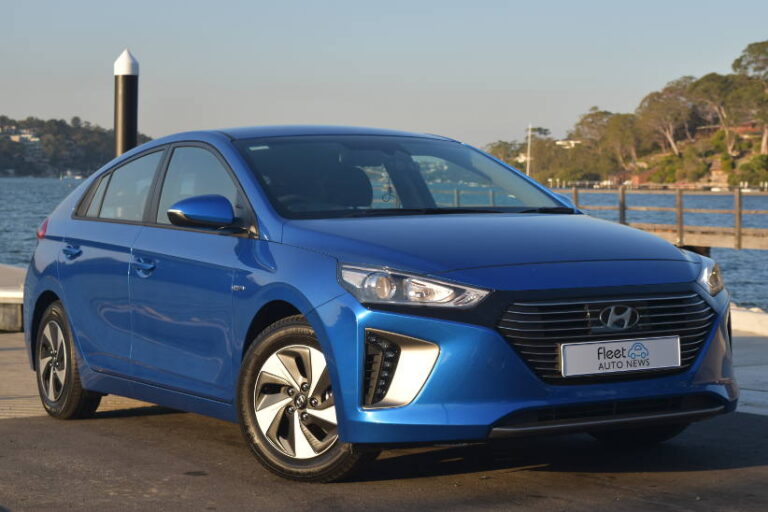– By Caroline Falls –
Hyundai has launched its Ioniq range of electric vehicles in Australia at prices sure to attract fleet buyers, with even the highest priced under $50,000.
How does it drive? Click here to read the FAN review.
Hitting local shores with a swathe of accolades Hyundai’s hatchback Ioniq is going to get a lot of attention. It’s been named UK’s best car, NZ’s best car, Green car of the year, and women’s car of the year among others in the past few months.
Finally, it’s here in Australia, after a localisation tuning programme, developed over thousands of kilometres of driving on Australian road surfaces, from urban roads to highways, freeways, mountain passes and country roads.
“The extensive local tuning programme has imparted on the Ioniq exemplary comfort, control and overall ride quality, while delivering dynamic capabilities and inherent fun-to-drive that are not typically expected in a green vehicle,” Hyundai said in a press release.
There are three models in the range — hybrid, plug-in hybrid and electric only. Each model comes in two trims — Elite or Premium. The cheapest is the hybrid Elite at $33,990, followed by the hybrid Premium at $38,990. The Premium trim includes leather seats, which are heated and ventilated, 16-inch wheels and other features. The plug-in hybrid starts at $40,990 for the Elite, rising to $45,490 for the Premium. The full electric Elite costs $44,990, and the Premium is $48,990. All prices are before adding on-road costs, such as registration and insurance.
Looking at the important performance data, the hybrid is powered by a combined electric/petrol engine powertrain. The 1.6 litre four-cylinder petrol engine (77 kW/147 Nm) is combined with an electric motor (32 kW/170 Nm) that Hyundai claims runs 3.4-3.9 litres of fuel per 100 kilometres. Hyundai lists the emissions from this vehicle at 80-90 grams of CO2 per kilometre. In this model, which doesn’t have external battery charging capability, the 1.56 kWh lithium-ion battery is recharged by regenerative braking.
The plug-in hybrid Ioniq has the same petrol engine as the hybrid, combined with a bigger electric motor (44.5 kW / 170Nm), and bigger battery (8.9 kWh), which can be recharged on a standard AC or home power outlet. This model uses 1.1 litres of fuel per 100 km and emits 26 grams of CO2 per km. It has a range of 63 km before needing a recharge.
The Ioniq full EV is powered by an 88 kW/295 Nm electric motor and a 28 kWh battery. It can be recharged on a standard AC power outlet, or a fast-charging direct current outlet. Hyundai said it takes about 20 minutes to bolster the battery as much as 80 percent using a high-voltage DC outlet. The full EV has a range of 230 km to 280 km, and has zero emissions.
“The new Hyundai Ioniq marks the opening of an exciting new chapter for our company,” said Hyundai Motor Company Australia Chief Executive Officer, Jung Wook (JW) Lee, in a press release.
“Ioniq makes responsive and eco-friendly electrified driving accessible to a wide range of customers, in an attractive and user-friendly compact package featuring comprehensive standard safety and locally tuned comfort and chassis dynamics, with the peace of mind of our five-year, unlimited kilometre warranty and lifetime service plan.”
In a story of standard advanced active safety, Hyundai’s SmartSense suite features in every 2019 Ioniq.
From the Elite hybrid version, Ioniq occupants are protected by forward collision-avoidance assist with pedestrian detection, blind-spot collision warning and rear cross-traffic collision warning systems, as well as driver attention warning, and lane keeping assist systems. All models also include cruise control.
Five paint colours are available across the Ioniq range – white, silver, blue, grey and red.
The Ioniq range comes with a five-year unlimited kilometre warranty, plus an eight-year, or 160,000 km warranty on the vehicles’ high-voltage batteries.






